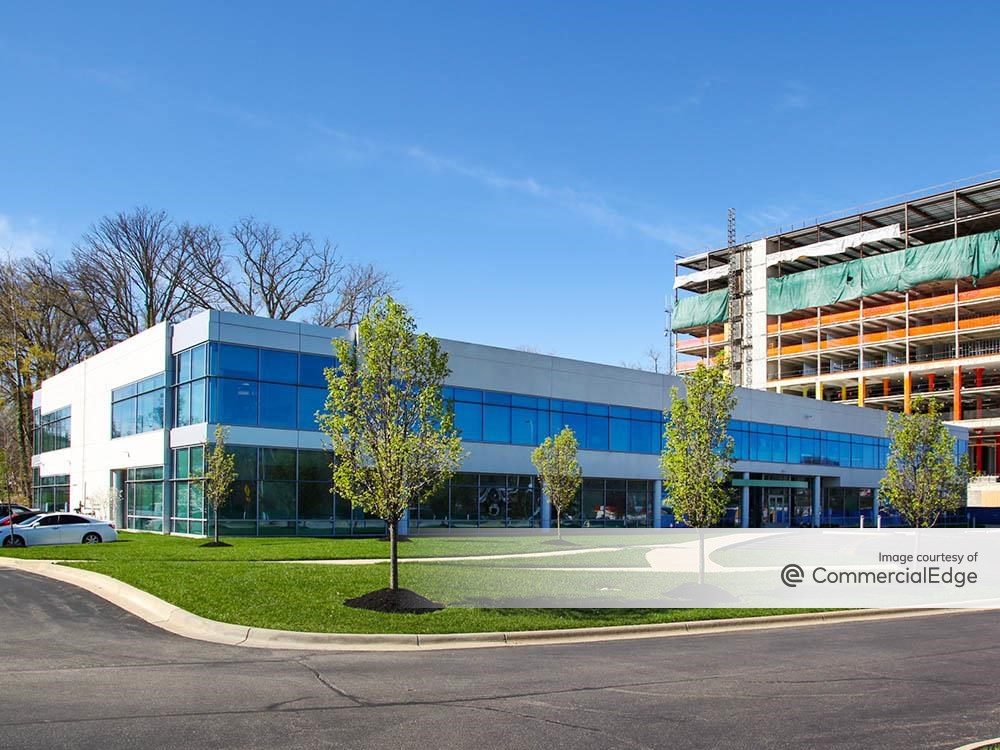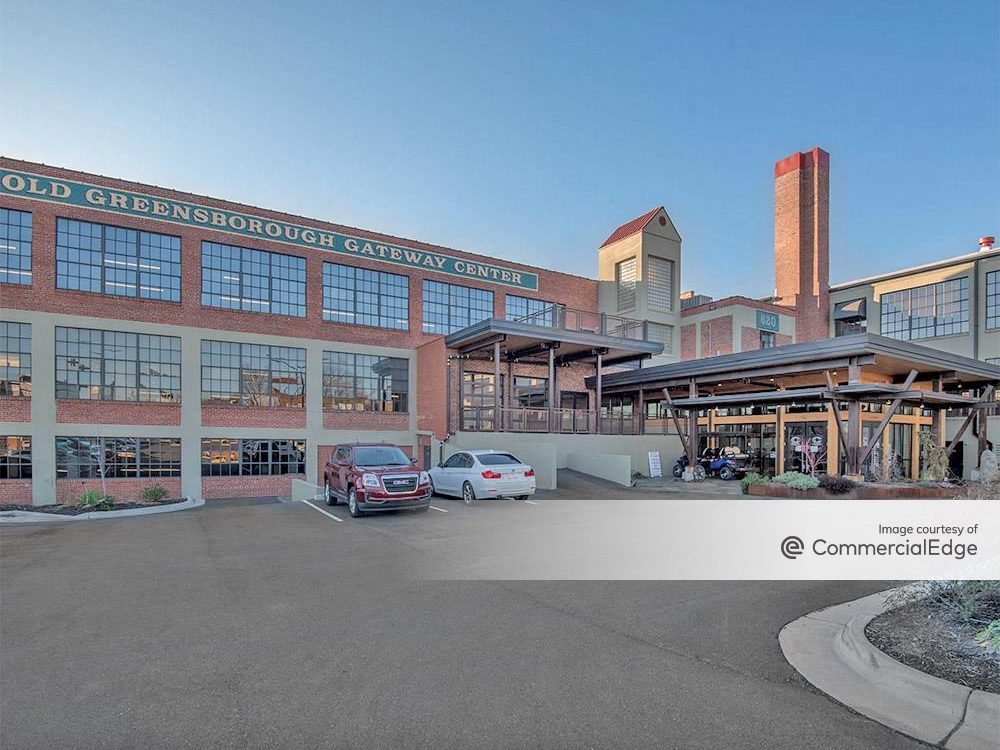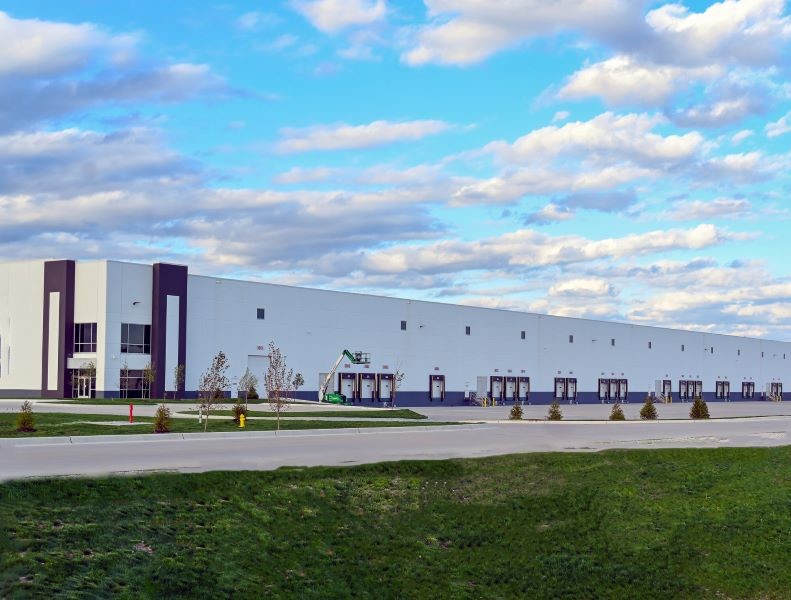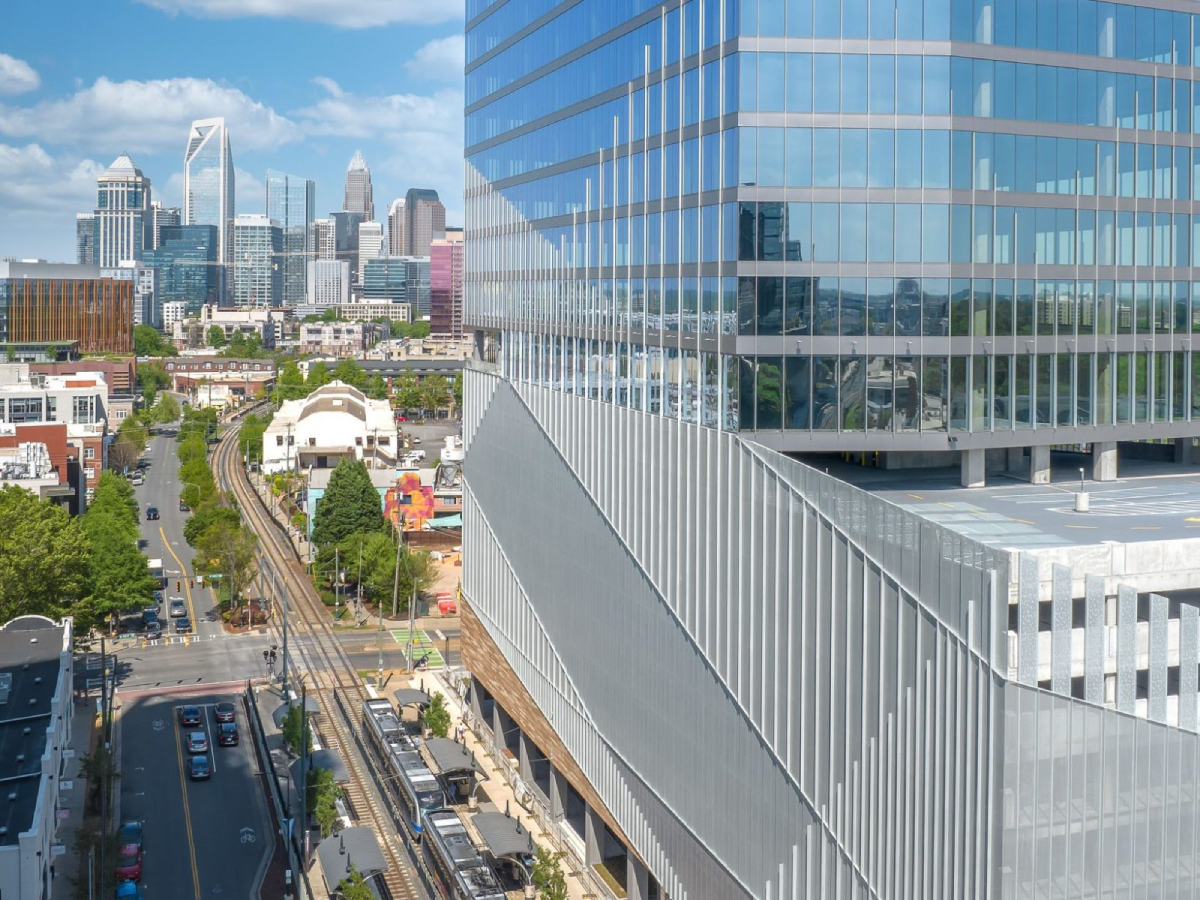Nonstarters in 2008; Deals to Watch in 2009
At the middle of this decade, headlines boasted supersized dollar signs and square footage. It was almost too much to keep up with. Last year, especially the second half of 2008, gave real estate players a chance to slow down and catch up with a decelerating pace of deals. Here are the deals across 10…
At the middle of this decade, headlines boasted supersized dollar signs and square footage. It was almost too much to keep up with. Last year, especially the second half of 2008, gave real estate players a chance to slow down and catch up with a decelerating pace of deals. Here are the deals across 10 major U.S. markets that did not happen in 2008. The developments that didn’t break ground or halted construction, as well as the landlords and tenants that failed to sign on the dotted line, are contenders to watch in 2009—once again especially in the second half.
Atlanta: All Eyes on Buckhead
By Adam Perrotta, News Writer
Atlanta certainly faces an uphill battle in all areas, but its status as still one of the fastest growing in the nation has thus far buoyed it during the economic storm. Also aiding the market is the fact that, among the few projects under way, most have already secured financing.
The Buckhead submarket, especially a trio of projects, will be watched closely in the coming months. Tishman Speyer Properties’ 500,000-square-foot Two Alliance Center is expected to deliver in June. Meanwhile, Novare Group intends to deliver The Ritz-Carlton Residences, a 34-story tower of 137 units and 425,000 square feet of Class A office space. And Terminus 200, a 565,000-square-foot office, the work of a joint venture between Cousins Properties Inc. and Prudential Real Estate Investors, is slated for delivery this year.
These developments are on schedule and have already secured some tenants, but almost 2 million square feet of unoccupied space will be delivered in Buckhead in 2009, will be a cause for concern among owners. But future development is expected to remain at a near standstill as long as the credit freeze lingers, good news for those landlords that were able to get their product to the market before the crunch hit.One notable exception could be the medical-office sector, which delivered 650,000 square feet in 2008 and has another 200,000 under way. As the population of Atlanta continues to grow and age, demand for these properties is also expected to increase in the coming years.
Boston: Vertex Reconsiders Move to Boston
By Paul Rosta, Northeast Editor
In the middle of 2008, the South Boston waterfront was on the verge of a major coup. Vertex Pharmaceuticals Inc., a 20-year-old Cambridge-based company, was reported to have signed a letter of intent to move to a 500,000-square-foot office building at Fan Pier, the $3 billion, 2 million-square-foot master-planned project rising on the South Boston waterfront.
As Boston Mayor Thomas Menino confirmed that a deal was in the works, Vertex and lead Fan Pier developer The Fallon Co. stayed mum. Vertex officials did say that the company was reviewing its real estate needs with an eye toward consolidating its local work force, distributed among nine buildings in Cambridge. A large-scale commitment at Fan Pier would have made the Vertex lease an instant contender for Boston’s biggest office lease of 2008. That distinction eventually went to Wellington Management Co.’s 450,000-square-foot lease at Russia Wharf, a mixed-used project that Boston Properties Inc. is developing in the Financial District.
A Vertex move to Boston would have had far-reaching implications. The firm was a good bet to be the first major commercial tenant at Fan Pier, which is also Boston’s biggest current development project. A commitment from a life sciences company like Vertex would also have garnered attention for Greater Boston’s life sciences industry, a mainstay of the city’s commercial real estate market. Boston is attempting to raise its profile as a host for biotechnology and pharmaceutical companies, which tend to congregate in neighboring Cambridge, and, increasingly, in Boston’s nearby suburbs.Hopes of landing Vertex for Fan Pier faded through the second half of the year, though, and 2008 ended without a deal in place. The other shoe finally fell in January, when Vertex disclosed that it was extending its leases at two locations in Cambridge. The decision reflects a larger trend of tenants renewing space in their current locations rather than moving. Meanwhile Fallon is continuing the search for an anchor tenant.
Chicago: Short-Term City
By Elena Gontar, Staff Writer
Like 2008, 2009 will likely see many short-term renewals while companies await improved economic conditions. Operations that were once handled internally are now outsourced, continuing the downsizing of space requirements. Tenants now focus on protecting capital investments, and Chicago firms favor short-term renewals. Those willing to sign long-term deals often negotiate for termination options should their requirements change. This trend is unlikely to reverse soon, as the volatile economy makes space predictions almost impossible.
One pothole along this bumpy road is Hamilton Partners’ 304,000-square-foot build-to-suit office project at Thorndale Avenue and Route 53 in Itasca. HSBC Bank USA N.A. signed a 15-year lease as the sole tenant in July 2008 but withdrew at the end of 2008. The development project is now on hold.In sales and leasing, Grubb & Ellis Co. struck a deal in November to sell the 522,000-square-foot Congress Center at 525 W. Van Buren St. to Franklin Street Properties Corp. for $130 million. The Wakefield, Mass.-based REIT, however, announced the deal’s termination in January, as it could not secure financing. And though The John Buck Co.’s 46-story skyscraper at 155 N. Wacker Drive is nearing completion, it lost Chicago-based business lender Bridge Finance Group as a tenant for the top three levels.
Dallas-Fort Worth: A Cautionary Tale
By Eugene Gilligan, West Editor
Mark Fewin, senior managing director of CB Richard Ellis Inc.’s Dallas office, has observed a more cautious approach among Metroplex office tenants in the last half of 2008, causing leases that might have closed to drag on into 2009. “Tenants want to take a pause and see what’s happening,” he reported. “They’re not folding up their tents or going out of business, but there is a delay in the decisionmaking process.”
Caution is the byword around town, agreed Cushman & Wakefield of Texas Inc. executive director Rick Hughes. “We’re used to seeing users making commitments and being forward looking,” he noted, but the credit crisis has changed that mind-set. “No one really knows whether this is going to last for two more months or for two more years.”
Some deals that were going forward have come to a halt. The 42-story Museum Tower, one of the signature developments in Dallas’ Arts District, set to contain luxury condominiums, has yet to break ground, reported a source who also noted that architecture firm HKS Inc. has delayed plans to consolidate into one office building. Additionally, build-to-suit offices for the Michaels Stores Inc. and Idearc Media L.L.C. also have stopped.
Many landlords may have difficulty refinancing the debt on their buildings in 2009, so sales activity may pick up, Hughes said. Also, Dallas tenants may benefit from slower leasing activity, as landlords may want to keep tenants in place by lowering rents in exchange for lease extensions.
But Hughes expressed optimism as corporations increasingly look for no-frills, economical office space. “We’re a make-sense, low-cost area. We’re going to come out of this faster than many other cities.”
Houston: Energetic Market
By Eugene Gilligan, West Editor
Houston’s economy outperformed many other U.S. cities in 2008, and the office sector posted 776,678 square feet of positive net absorption. But the market was not immune to the economic slowdown, as this absorption marked the lowest since 2004. By comparison, Houston absorbed 6 million square feet in 2007, according to Grubb & Ellis, Co.The industrial market registered a positive year with 6.5 million square feet of absorption, according to Grubb & Ellis.
Vacancy may increase in 2009 as new industrial buildings enter the market and leasing demand ebbs. Job growth has slowed, but it is still positive. According to the Texas Workforce Commission, seasonally adjusted jobs in the Houston area grew at an average pace of 7,500 per month from June to November. And the unemployment rate as of the fourth quarter sat at 5.5 percent, compared with the nation’s 6.7 percent.
Still, corporations and developers delayed some big deals in 2008. KBR Inc. announced it had signed an earnest-money agreement to lease almost 1 million square feet of office space in a new Energy Corridor building and planned to break ground later in the year. But, that project is now on hold, and a KBR spokesperson said the project will not go forward until market conditions improve.
The River Oaks District—a massive mixed-use project set to break ground by the end of 2008 with 300,00 square feet of retail space, 300 luxury apartments, 250,000 square feet of office, two four-star hotels and 150 for-sale condominiums—has been delayed due to the constrained capital markets, though the developer, OliverMcMillan, has not scaled back plans for the project.
Los Angeles: Grand Avenue Hits Speed Bump
By Eugene Gilligan, West Editor
The slowing economy put pressure on Los Angeles in 2008. The office market saw 3.2 million square feet of negative absorption, and vacancy rose 80 basis points during the fourth quarter to 12.2 percent. That also represents 250-basis-point jump for the year, according to Grubb & Ellis Co.
Industrial leasing activity also cooled in 2008, registering 490,273 square feet of negative absorption, Grubb & Ellis reported. But vacancy is still low, at 2.2 percent, and the land severe constraints that make developing industrial product difficult are likely to keep vacancy low. Still, the decline of container traffic through the giant twin ports of Los Angeles and Long Beach, the major U.S. entry points for Asian imports, may challenge the market. Long Beach reported an 11 percent decline in container traffic in 2008, and Los Angeles movement fell 6 percent, according to maritime transport news portal Lloyds List. Transport research firm Transport Trackers predicts that Asia-to-United States container volume will dip 5 percent this year, perhaps more if the U.S. economy does not stabilize during the second half.
Martin Pupil, senior managing director for Colliers International’s Los Angeles Basin office, said acquisition-ready investors are convinced that asset values still have a ways to fall. He noted, though, that values for solid, well-located properties have not declined significantly.
A delay has also descended on a signature project that is envisioned, along with L.A. LIVE, to change the face of Downtown. Groundbreaking on The Related Cos. massive Grand Avenue mixed-use development has been pushed back to Feb. 15 of this year, and there is some doubt if Related will be able to obtain financing to meet that goal.
New York City: JPMorgan Ends Chase for Fifth WTC Tower
By Paul Rosta, Northeast Editor
When the World Trade Center redevelopment wraps up sometime in the next decade, it will boast a quartet of new office towers, including the 1,776-foot-tall Freedom Tower and three high-rise office buildings being developed by Silverstein Properties Inc. At the start of 2008, it looked as though those four would be joined by a fifth. In 2007, JPMorgan Chase & Co. disclosed plans to build a $2 billion, 1.3 million-square-foot headquarters for its investment banking business at the south end of the site, not far from the footprints of the fallen Twin Towers.
In venturing Downtown, the financial services giant would have joined The Goldman Sachs Group Inc., which is building a new headquarters tower a few blocks from the World Trade Center. The proposed location of JPMorgan’s tower carried symbolic weight, as well. The investment bank had chosen to build on the site occupied by the former Deutsche Bank building, a lingering reminder of the Sept. 11, 2001, terrorist attacks that was damaged beyond repair by the collapse of the Twin Towers. It is undergoing a painstaking, technically demanding removal.JPMorgan’s proposal initially called for a distinctive design marked by a cantilevered midsection that would provide trading-floor space. But early last year, dramatic changes in the capital markets raised doubts about the viability of the fifth tower. After acquiring failed investment banking firm Bear, Stearns & Co., JPMorgan found itself overseeing 4 million square feet of office space that came with the deal, making a multibillion-dollar investment for new space seemed less urgent.
San Francisco: Development Delays
By Elena Gontar, Staff Writer
San Francisco commercial real estate facing a cycle of rising vacancy rates, softening rental rates and increasing loan defaults. Landlords also will have trouble renewing tenants. In response to weakening tenant demand, they have become more aggressive, ceding the upper hand in negotiations to tenants. However, according to Grubb & Ellis Co.’s San Francisco Market Trend reports, an economic turnaround is likely to begin by year-end.
In the meantime, inactive capital markets, combined with a drop in local office market fundamentals, froze development on several office projects throughout the city. Beacon Capital Partners L.L.C. suspended construction on its 27-story, $100 million 535 Mission St. in October. Lincoln Property Co. has also halted its 350,000-square-foot 350 Bush St., and TMG Partners’ $200 million renovation of 680 Folsom St. is on hold, as well.
Additionally, Alexandria Real Estate Equities Inc. announced late last year that it would delay breaking ground on two buildings in its Mission Bay biotechnology campus, despite the fact that tenants were willing to commit to 200,000 square feet.
South Florida: A Slow Start
By Adam Perrotta, News Writer
As the South Florida market emerges from a notably quiet 2008, its prospects for the coming year are uncertain. 2009 got off to an inauspicious start, as Flagler Development Group and Regency Centers Corp. shelved plans for a 420,000-square-foot big-box shopping center in West Dade. The project had received zoning approval and was set to break ground early this year. But as the retail sector took a beating over the holiday season, several prospective tenants reportedly backed out. Flagler has stated that it expects the stoppage to be temporary.
Meanwhile, an $88.7 million purchase from Africa Israel Investments Ltd. of undeveloped land for part of the 30-acre Miami Worldcenter mixed-use project fell through when the buyer claimed force majeure after municipal authorities rejected a proposed tunnel under the property. Next steps remain unclear for the high-profile project’s developers, a consortium led by Boca Raton businessman Art Falcone and entrepreneur Marc Roberts.stabilize during the second half.
A number of building owners face financial challenges and dwindling demand. While they might have been content to ride out the storm rather than sell for less last year, 2009 will likely see a jump in distressed sales, especially to low-leverage buyers that have cash reserves on hand.
Vacancies, meanwhile, are expected to rise considerably as tenants continue to downsize and demand less space. Much of the little new product expected to come online in early 2009 will be vacant. Many landlords will opt for stability over profit and are offering reduced rent for longer commitments. Subleasing could become a more popular option for tenants that want to increase cash flow by renting out space after reducing workforces.
Washington, D.C.: Resilient Showing
By Suzann D. Silverman, Editor-in-Chief
The nation’s capital saw significantly reduced sales across all sectors last year. Office leasing likewise dropped, though retail and multi-family held up much better, thanks to the strong job market. Marcus & Millichap Real Estate Investment Services Inc. predicted some rise in apartment vacancy rates, labeling such activity typical for a change in administration. Still the level is expected to reach only 5.6 percent. And though slower consumer spending has more recently hit this historically underretailed, Cushman & Wakefield Inc. anticipates stabilization by 2010, following a steady performance or just slight contraction in 2009.
These conditions have allowed development of office and multi-family projects to move forward, though retail projects have slowed, especially in the Capitol Riverfront area. In all, 8.9 million square feet of office construction is under way, according to Cushman & Wakefield, and speculative projects are actually taking place in Capitol Hill/NoMa, the Southwest and the Ball Park/Navy Yard areas. Three major projects include 801 17th St., 800 17th St. and 2200 Pennsylvania Ave.
Additionally, 1,678 apartment units are set to deliver in 2009 and 2010, including 1229-1231 25th St., N.W., at M Street, N.W.; The Yards Phase II; and 909 New Jersey Ave., S.E.On the other hand, 733 10th and G, stopped construction last year after losing its equity backers. PN Hoffman had planned to convert a church into to a combination of a church and condominiums, plus parking. More recently, the developer had switched the plan to office construction.






